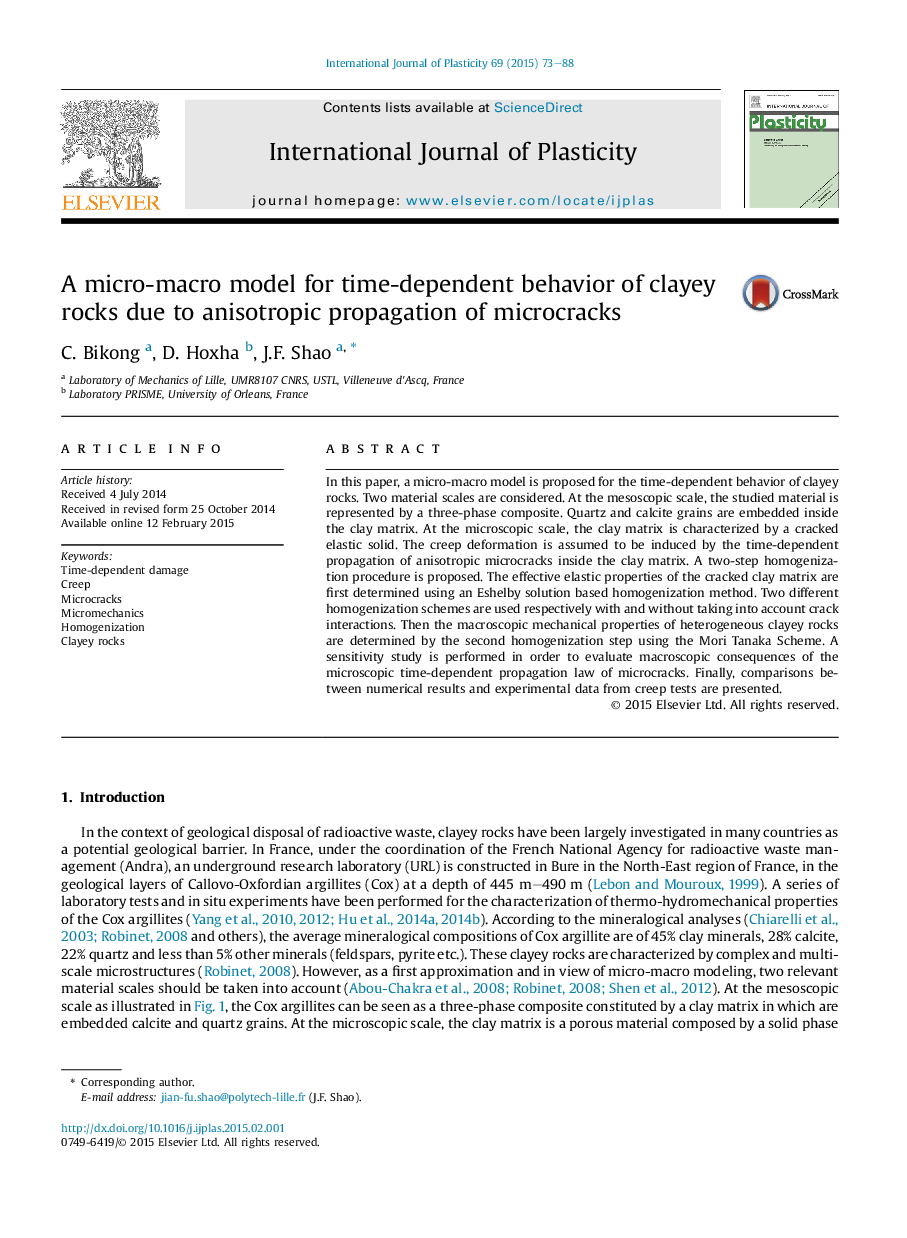| Article ID | Journal | Published Year | Pages | File Type |
|---|---|---|---|---|
| 786427 | International Journal of Plasticity | 2015 | 16 Pages |
•A micro-macro model is proposed for anisotropic damage in clayey rocks.•A two-step homogenization procedure is developed.•The time-dependent behavior is investigated considering subcritical propagation of microcracks.•The effects of homogenization schemes are taken into account.
In this paper, a micro-macro model is proposed for the time-dependent behavior of clayey rocks. Two material scales are considered. At the mesoscopic scale, the studied material is represented by a three-phase composite. Quartz and calcite grains are embedded inside the clay matrix. At the microscopic scale, the clay matrix is characterized by a cracked elastic solid. The creep deformation is assumed to be induced by the time-dependent propagation of anisotropic microcracks inside the clay matrix. A two-step homogenization procedure is proposed. The effective elastic properties of the cracked clay matrix are first determined using an Eshelby solution based homogenization method. Two different homogenization schemes are used respectively with and without taking into account crack interactions. Then the macroscopic mechanical properties of heterogeneous clayey rocks are determined by the second homogenization step using the Mori Tanaka Scheme. A sensitivity study is performed in order to evaluate macroscopic consequences of the microscopic time-dependent propagation law of microcracks. Finally, comparisons between numerical results and experimental data from creep tests are presented.
